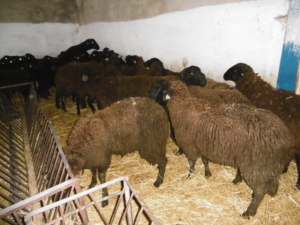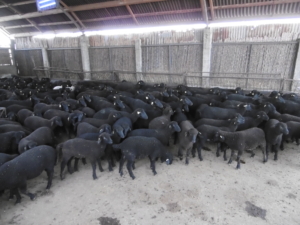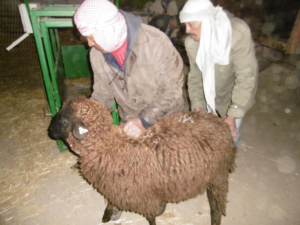Among the sheep breeds reared in Tunisia, there is one very particular: The Black of Thibar. She distinguishes itself from Barbarine (in big tail), Gharbi (in fine tail) or of the D’mane, also presents in Algeria and in Morocco. Tunisian breeders seized this breed adapted to their environment to position as key players of the sector.
Originally selected by the White Fathers in their domain of Thibar, in the north-west of Tunisia, the Black of Thibar originated from crosses between the Algerian Gharbi and the Black Merino of Arles. This breed of sheep has many advantages: meat less fat, its taste quality is proven, and the quality of its wool is unanimous. Its black color has been sought in order to combat the photosensitivity to which the local breeds of light color are subject; Particularly as a result of consumption of St. John’s wort.
To maintain and improve the Black of Thibar, breeders grouped within the grouping of agricultural development of the breeders of ewe of the North (GDAEBN) took at first the initiative to create “Rams breeding center” in the farm of one of their member: stemming from the best breedings and the selected players, these young breeders are intended for an annual exchange between the member breeders of the GDA, so avoiding the consanguinity.
To go farther to the improvement of the performances of the breed and the fight against the sanitary risks – The climate change which can favor new epizootic diseases – the GDAEBN is also for the initiative of a partnership with the laboratory of the animal genetic resources of the Agronomic Institute of Tunis (Inat) and the Office for Livestock and Pastures (OEP), the state body and the main actor of the sector in the country. Wishing to position as the engine of the plan of selection of the Black of Thibar, the GDAEBN intends to put to advance the real expectations of the producers both on the plan technical and economic.
It is about a very original approach in Tunisia where, to there, the profession was only undergoing the choices of the administration on one hand, and those of the commercial sector on the other hand.
Rare are the agricultural productions throughout the world for which the genetics was not got by private, often multinational companies, as those of the plant seeds or dairy cattle. On the contrary, the will shown of the GDAEBN is to allow the Tunisian breeders to keep the hand on the genetics of their key ovine breed, the Black of Thibar.





